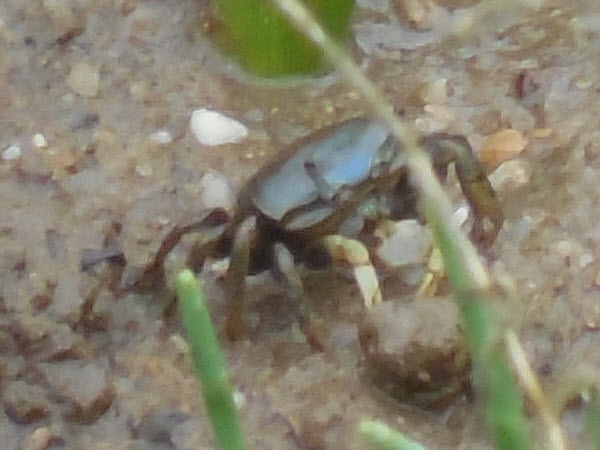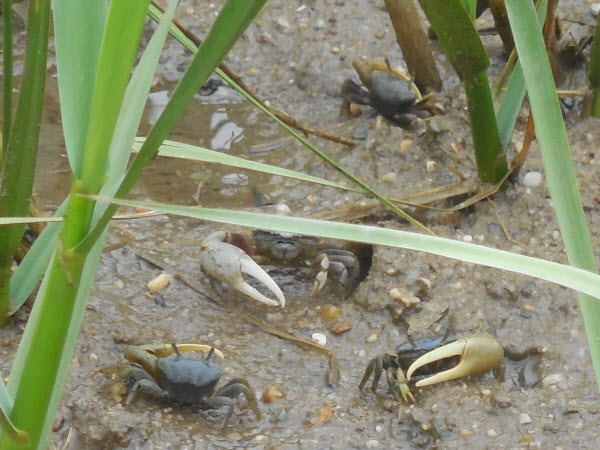Elephant Seals
These images are of Elephant Seals on the beach at Año Nuevo State Park, just outside Santa Cruz, California, taken in February 2017 during a guided tour offered by the park. We learned that these seals spend most of the year at sea, returning to land in December / January to breed.

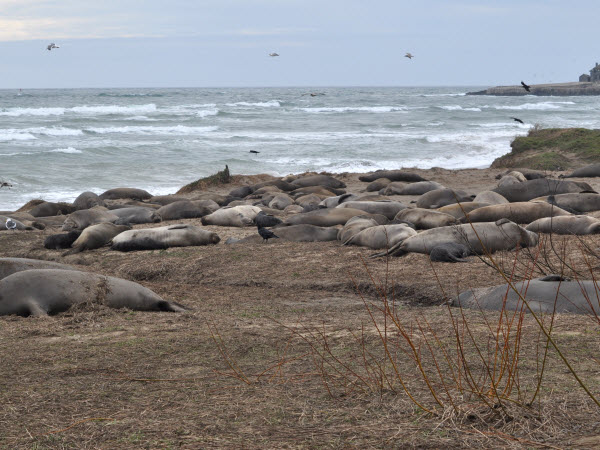
The adult seals are able to travel across the beach, assisted by their flippers. The image below is a detail of the one at right, showing a female moving across the beach among feeding pups.
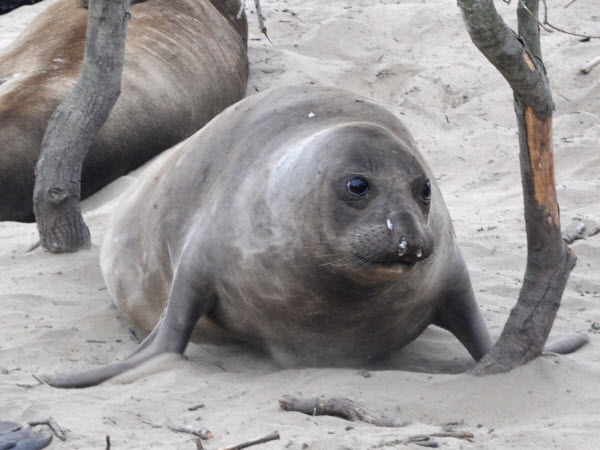
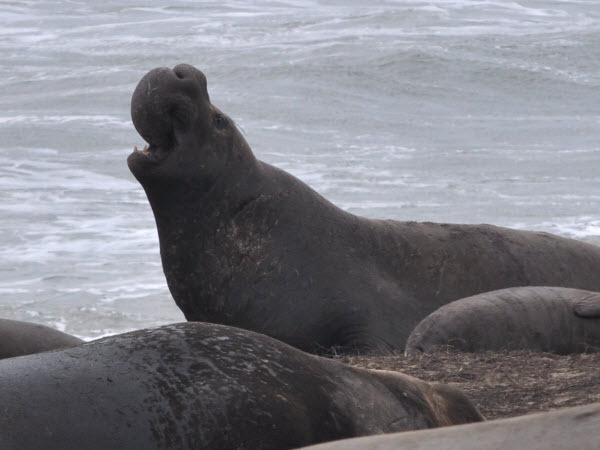
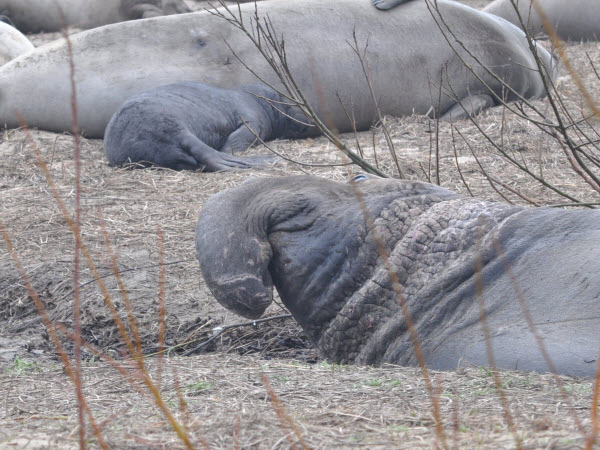
The bull elephant seals arrive early to claim their part of the beach, fighting for dominance. Even in the 30 minutes or so that we were on the beach there were a number of vociferous fights. We were happy to learn that, for all of the noise and the intimidating size of these animals, these are typically not fights to the death. The video shows a brief fight, and a detail of the two bulls shows that the teeth are real. But these two settled right down on the beach, practically side by side.
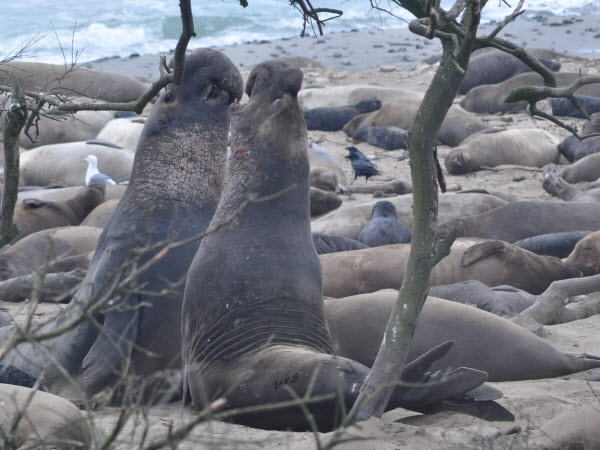
Not so polite of me, but I was thinking there would be a nipple for the pup to suckle on, and so it seemed something wasn't right with this mom - but no - I presume this is an adaption, and seeing how these huge animals navigate across the sand, I am sure they would not want it any other way!
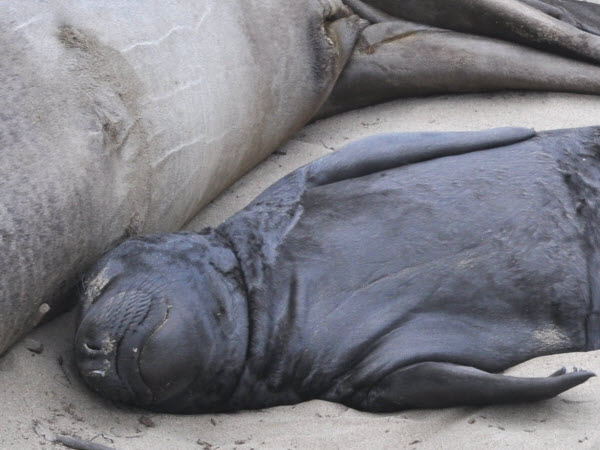
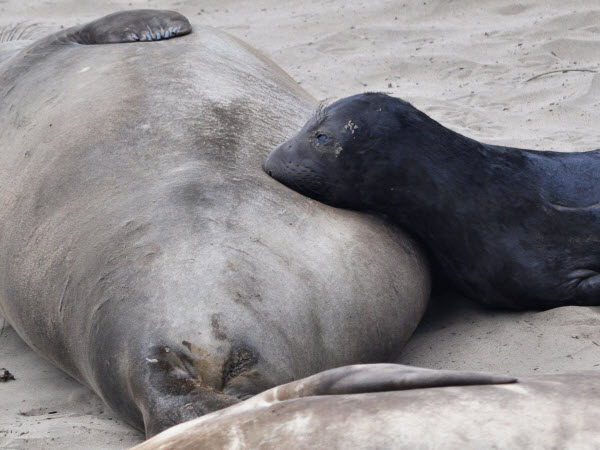
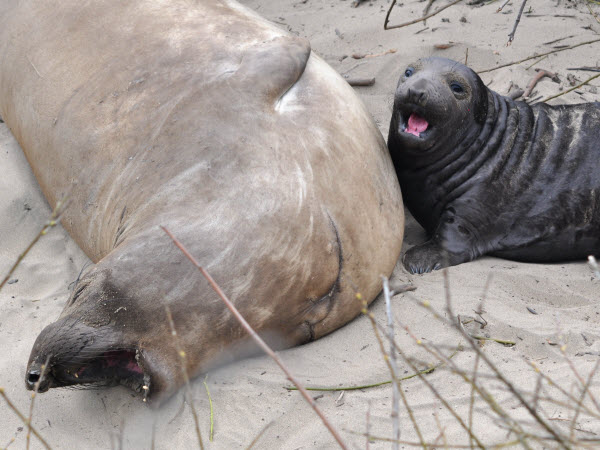
All done - such a universal - I love the finality of the mom turning belly down and checking out!
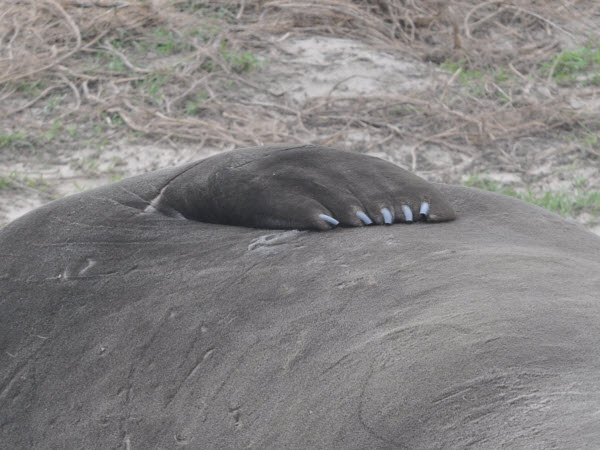
Hundreds of seals and their young are present on this beach - it is hard to get the scope of them in a still photo. The video clip shows more of this beach, the feeding of the many pups, and the hundreds of adults. The pups make quite a noise as they feed. The docent leading our walk can be heard.
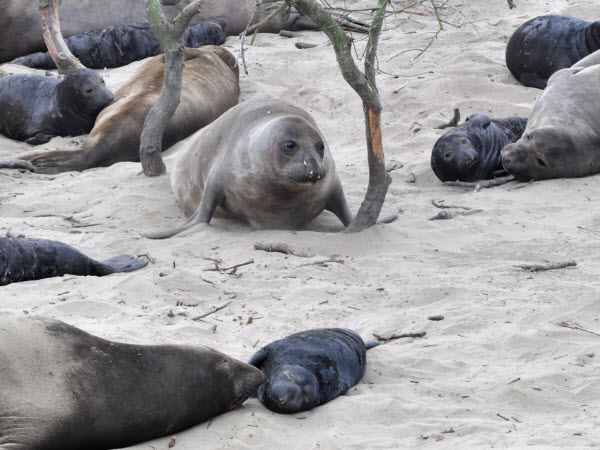
The male elephant seal has a trunk like nose that presumably give the name elephant seal.
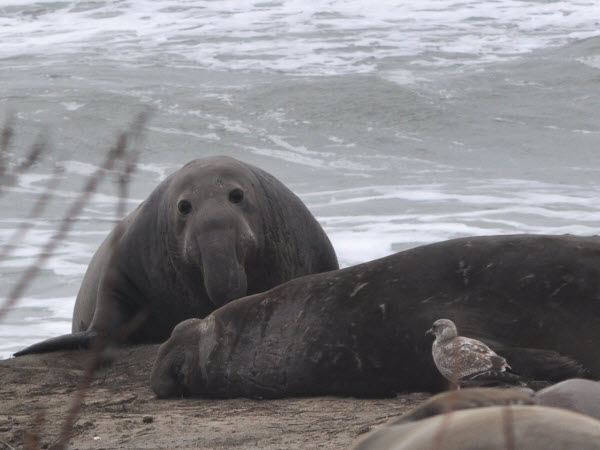
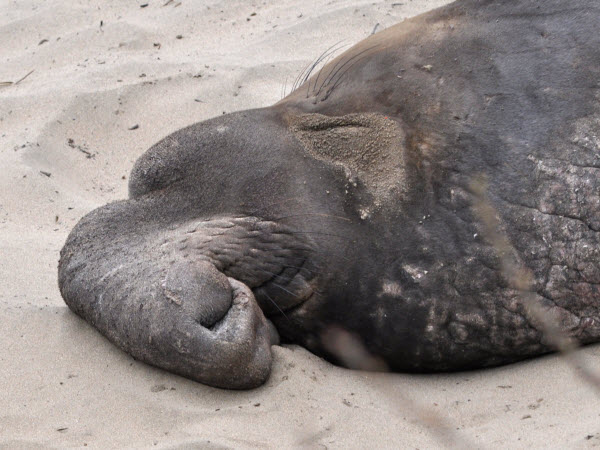
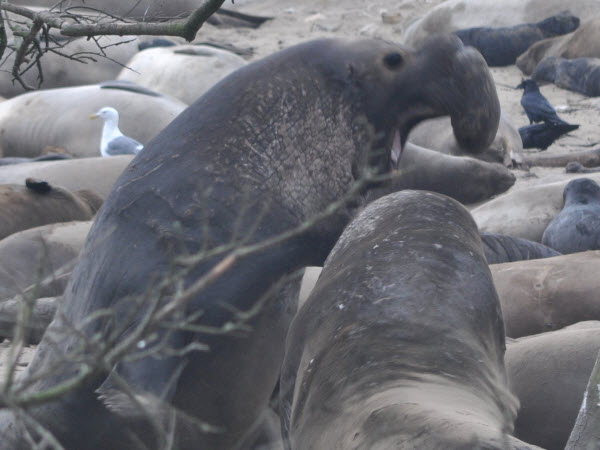
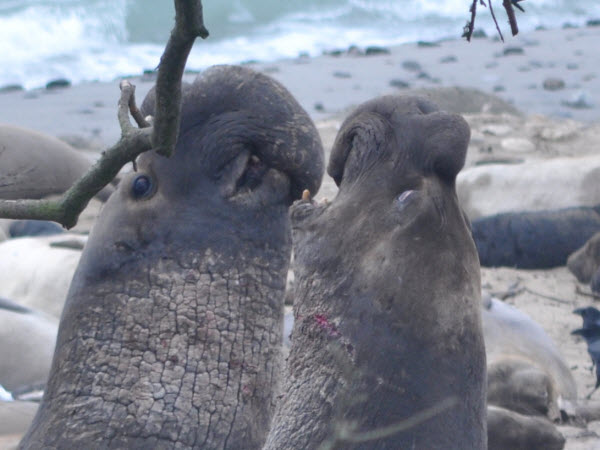
The fighting dads are all very entertaining, but really it is all about the moms and the pups, yes? Elephant seal pups are just as cute as any other baby, I think!

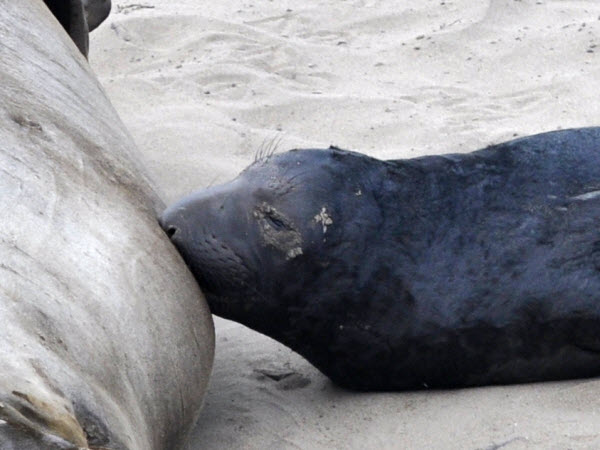
The pups are just as demanding and noisy as any other child looking to feed - the still pictures are entertaining to look at, but the movie even more so - and now the din that can be heard in the clip showing the whole beach, at top of this page, makes more sense - a beach full of screaming babies!

Last, that flipper. Does it have fingers and nails? These large animals use their flippers to "walk". And the movie - she scratches an itch with her flipper!
The staff and volunteers at Año Nuevo State Park do an outstanding job and are very knowledgeable. The guided walk that we participated in took us right to the breeding grounds, very nearly walking amongst the sea lions, and with several docents available to tell us about the elephant seals, discuss and answer questions. Of course my memory of what I heard during a 2 hour walk needs some refreshing - I like this site for elephant seals (Scripps Institute).
There are so many fun things to read about - where do these seals travel during the rest of the year (the females take a different direction than the males), what do they eat and where, they dive deep - I believe even as deep as a mile down, and can stay down for 2 hours and maybe more. How do they come back to the surface without having to deal with the bends? (I think the answer is that they go down only with the air in their lungs, and they might even exhale before diving - not sure on that one - but very little air to compress into the blood stream). They are on the beach with their pups for a couple of months, and do not eat during that time.
Moon Jellyfish
These jellyfish were present in great numbers in the Monterey harbor, protected behind the docks from a stiff wind.
The jellyfish is a multicellular organism with a bell-shaped upper part and an internal gastrovascular cavity. The outer surface is coated with mucous, which serves to collect food, in the form of small plankton, protozoans, diatoms and eggs (Rodriguez, R, 19999, Animal Diversity Web, and then moved by flagellar action to collect on the lappets and then along eight separate canals, running into the stomach.
I think my view of the jellyfish is a blob of amorphous ick that might sting me, and so I was interested to see a sea lion eating these jellyfish in the harbor. The size of the jellyfish is sufficiently large that it was a bit of a production for the sea lion to eat. Hmm - google search - pretty emphatic that sea lions do not eat jellyfish! Maybe I was seeing something else - but it was right off the wharf, a few feet away, and certainly looked like a jellyfish! I guess just off a commercial fishing wharf could be any number of things that could be characterized as amorphous ick.
Jellyfish are multicellular organisms with specialization, no cell wall, no backbone, and so are classified as animals, invertebrates. The Moon jellyfish consumes single cell organisms, but also small fish. Cnidocytes are located along the oral arms, or tentacles. Each is a single cell containing a cnida - a giant secretory organelle that can fire a structure that contains toxin, used for prey capture and defense. And so these cnidocyte bearing animals are classified in the phylum Cnidaria. (ref: Shull, Aurelia aurita, U Wi)
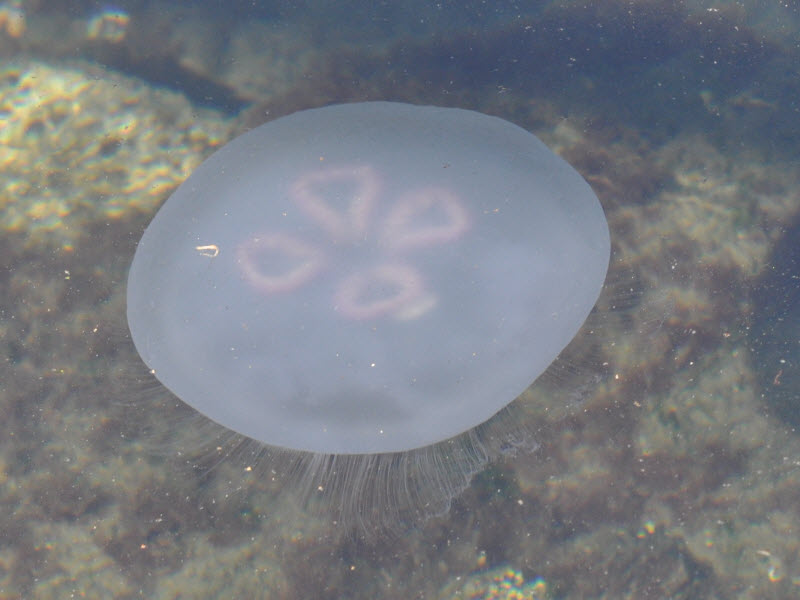


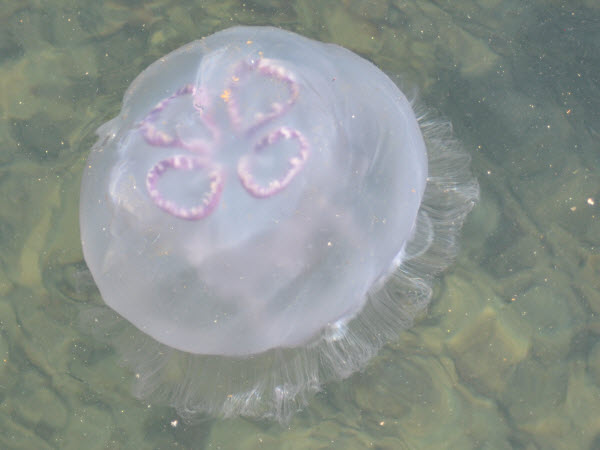
The jelleyfish is dome shapped, and "the base of the bell-like upper body is composed of a ring of muscle-like cells called the coronal muscle" (ref: uwlax.edu: aurelia aurita). Contraction of the muscle causes movement by jet propulsion as water flows out of the of the dome. This mechanism is more of a way to keep the jellyfish near the surface of the water, with the jellyfish traveling with the water currents.
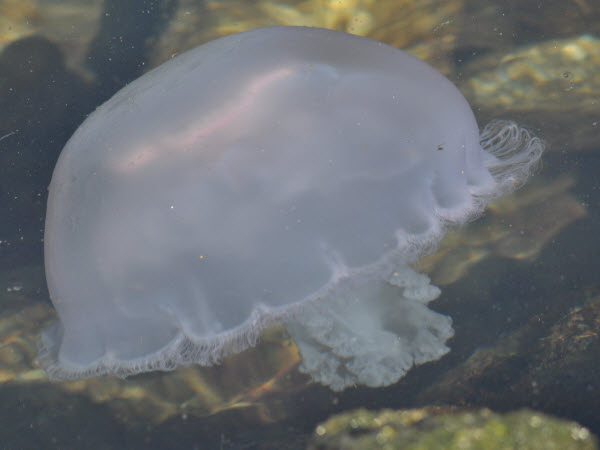
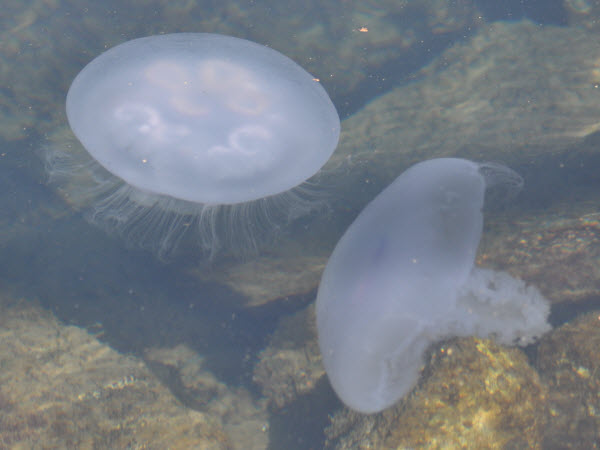
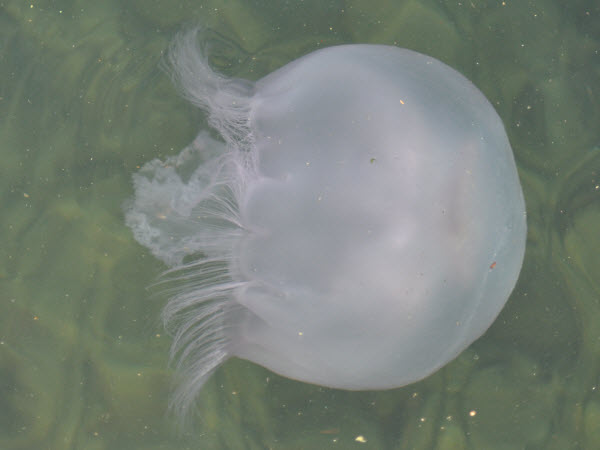
Four redish / pinkish / purple cresecent shapes are clearly visible through the top of the bell - these are the gonads, or reproductive glands of the jellyfish, located at the base of the digestive system. The inside of these rings is for digestion, the outer edge is the reproductive system. Male and female jellyfish look quite similar, but can be distinguished. A reference with good description and images: notcot.com: breeding jellyfish. Fertilization begins with the males producing spermatozoa in mucous strings, which are collected by the female using her oral arms.
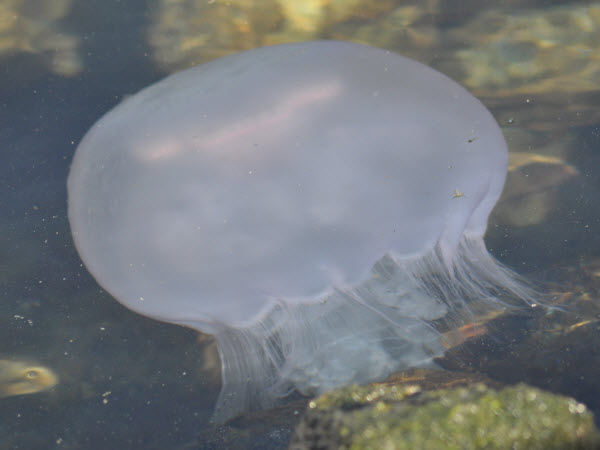
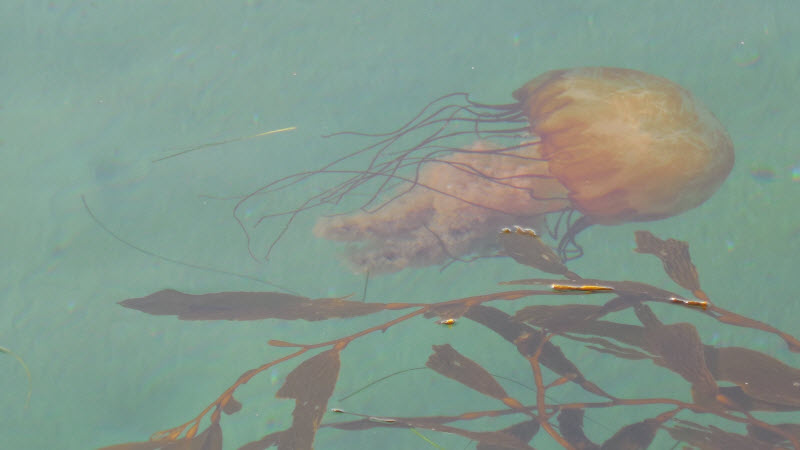
Wellfleet, on Cape Cod, there is an island in the inner harbor that can be accessed by foot bridge. At the water line is a very active area of fiddler crabs - many thousands, making for good entertainment. I learned that the male crabs have the greatly enlarged claw - a mating claw. And - if the mating claw is lost, it is replaced by a small feeding claw, while the surviving claw expands into a new mating claw (ref: https://wetlandsinstitute.org/fascinating-fiddler-crabs/). I will have to go back for more photos, but I did find a female, with the two feeding claws, in one of my photos - seems to be a preponderance of the male crabs in these photos!
